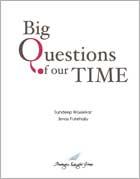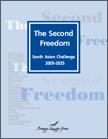What will the security architecture of the post-US hegemony look like?
|
|
December 12, 2016
By Sandy Gordon
|
The twenty-first century will likely see the relative decline of the US as an Asian and even global power. What will the security architecture of the post-US hegemony look like?
Will it involve a concert of powers; A bipolar power balance such as existed in the Cold War; or The rise of another hegemonic power such as China or India?
In the so-called 'Asian century', has the time come to develop an 'Asian' sensibility towards human rights commensurate with rising Asian power and so-called Asian values, such as the joint family and maintenance of social cohesion? If so, how would such a sensibility be integrated with currently held human rights values largely derived in the West revolving around the rights of the individual and democracy? Will countries like India ‘leapfrog’ labour-intensive manufacturing? If so, what are the implications for absorbing agricultural labour? New technologies will allow for more decentralised, less labour-intensive manufacturing.
These include robotics, digitisation, the Internet of ‘things’, 3D printing and 'nimble' sub-contracting by small firms assisted by the ICT revolution. How should economies like India’s, which still have large numbers of agricultural labourers, modernise and plan? For example, could small-to-medium towns and businesses be developed as substitutes for mega-cities and mega-businesses?
This article is a part of 'Big Questions of Our Time - The World Speaks'. To download the full publication, click here
Related Publications
-
.jpg&maxw=50)
Big Questions of Our time: The World Speaks, 2016
Download:Big Questions of Our time: The World Speaks _Full Report
-

-

Second Freedom South Asian Challenge 2005-2025, 2005
read more
Download:Second Freedom South Asian Challenge 2005-2025 Full Report
Related latest News
Related Conferences Reports
-

Global Challenges Conference, October 2016
Download:Global Challenges Conference Report
-

Conference on Responsibility to the Future: Business, Peace and Sustainability, June, 2008
Download:Global Security and Economy: Emerging Issues


